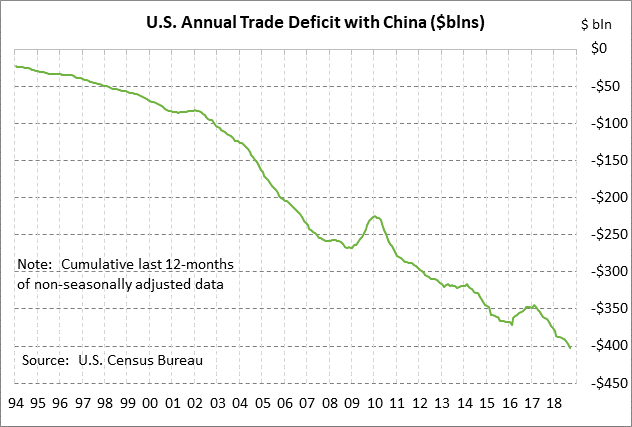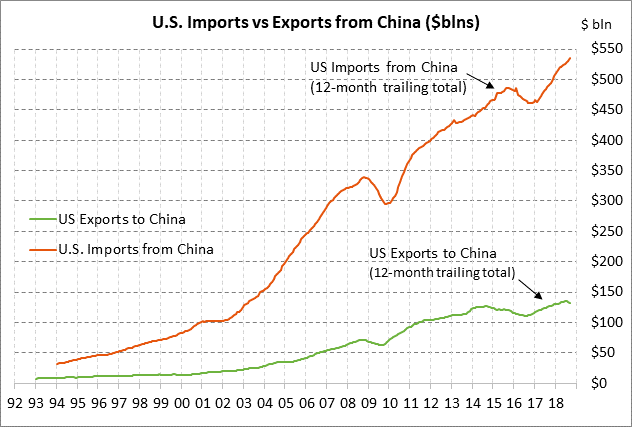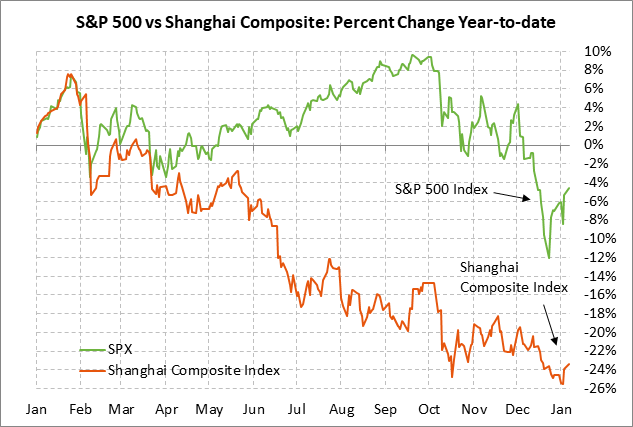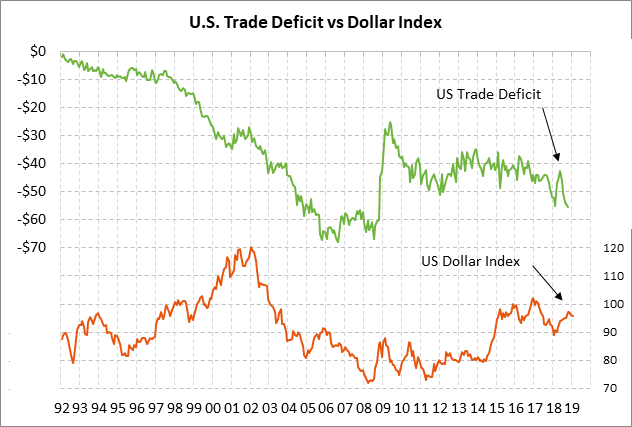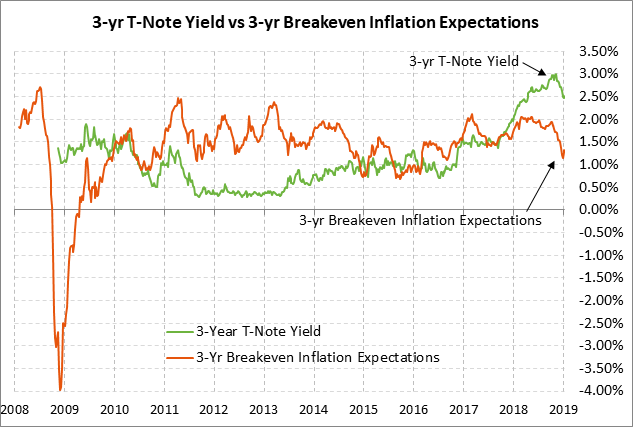- US/Chinese trade talks get a boost as Vice Premier Liu shows up
- President Trump tries to sway public opinion on the border wall shutdown with an address to the nation
- JOLTS job openings expected to remain strong
- U.S. trade deficit expected to narrow slightly from 10-year high
- 3-year T-note auction to yield near 2.52%
US/Chinese trade talks get a boost as Vice Premier Liu shows up — The markets were encouraged that Chinese Vice Premier Liu, President Xi’s top economic advisor, unexpectedly showed up at the first day of the Mon-Tue trade talks in Beijing between U.S. and Chinese mid-level officials. The drop-in was taken as a sign that President Xi wants to make sure the meetings go well in an attempt to reach a final agreement that brings US/Chinese trade tensions to an end.
The markets were also a bit more hopeful after Commerce Secretary Wilbur Ross on Monday said, “There’s a very good chance that we’ll get a reasonable settlement that Chinese can live with, that we can live with, and that addresses all the key issues.
The reality is that the time is winding down on President Trump’s first term. If the current trade talks break down around the time of the March 1 deadline, there may not be enough time to repair the relationship and commit to a new round of talks before next year when President Trump will be in campaign mode ahead of the November 2020 election. The longer an agreement takes, the more China may simply try to run out the clock on the Trump administration.
The Trump administration is also under pressure to get a trade deal done due to the U.S. stock market correction. The U.S. stock market in December took a heavy hit with the S&P 500 index falling -9.2%, which was a much larger decline than December’s -3.6% sell-off in the Shanghai Composite index.
President Trump tries to sway public opinion on the border wall shutdown with an address to the nation — President Trump tonight at 9 pm ET will address the nation about the US/Mexican border and his demand for a wall. Mr. Trump is then scheduled to visit the border on Thursday.
The Trump administration is trying to regain some political momentum as Congressional Democrats refuse to provide any money for a border wall except the previously agreed-upon $1.3 billion for border security. Meanwhile, the partial U.S. government shutdown is clipping 0.1 point from U.S. GDP growth every two weeks, according to Chair of the White House Council of Economic Advisors Kevin Hassett.
Meanwhile, the odds seem to be growing that President Trump may follow through on his threat to declare a national emergency on the border and direct the U.S. military to build the wall. The markets would probably be unhappy with the fresh political uncertainty from such an emergency declaration.
However, Mr. Trump could possibly use the emergency declaration as an escape route from the current government shutdown if he agreed at the same time to reopen the government. By pairing a border emergency declaration and the reopening the government, Mr. Trump could get out of the government shutdown trap while arguing that he is keeping his promise for a wall by having the military build the wall. The question about whether the military could overcome the many funding and legal challenges to actually build the wall would then be left to another day.
JOLTS job openings expected to remain strong — The market consensus is for today’s Nov JOLTS job openings report to show a small increase of +21,000 to 7.100 million, adding to October’s +119,000 jump to 7.079 million. The job openings series remains in very strong shape at only 214,000 below Aug’s record high of 7.293 million and well above the 12-month trend average of 6.6 million. The JOLTS job openings series is a leading indicator for the payroll report since many job openings will turn into an actual job hire within 1-3 months when the hiring process is complete. Last Friday’s Dec payroll report was surprising strong at +312,000.
U.S. trade deficit expected to narrow slightly from 10-year high — The consensus is for today’s Nov U.S. trade deficit to narrow slightly to -$54.0 billion from October’s 10-year high of -$55.5 billion. The U.S. trade deficit has widened in recent months mainly because of strength in imports, which were up +8.5% y/y in October. The U.S. trade balance is currently being buffeted by U.S. and retaliatory tariffs which are causing U.S. and overseas companies to make various adjustments in their purchases.
3-year T-note auction to yield near 2.52% — The Treasury today will sell $38 billion of 3-year T-notes. The $38 billion size of today’s 3-year T-note is unchanged from last month’s auction, but up by a hefty $14 billion from the $24 billion size that prevailed in 2015/17. The Treasury will then continue this week’s $78 billion coupon package by selling $24 billion of 10-year T-notes on Wednesday and $16 billion of 30-year T-bonds on Thursday. The 10-year and 30-year auctions will be the second and final reopenings of the respective November issues.
Today’s 3-year T-note issue was trading at 2.52% in when-issued trading late yesterday afternoon, which is up by +19 bp from last week’s 11-month low of 2.33%. The 12-auction averages are as follows: 2.75 bid cover ratio, $87 million in non-competitive bids to mostly retail investors, 3.4 bp tail to the median yield, 19.1 bp tail to the low yield, and 47.9% taken at the high yield.
The 3-year is the second least popular security among foreign investors and central banks. Indirect bidders, a proxy for foreign buyers, have taken an average of only 47.9% of the last twelve 3-year T-note auctions, well below the median of 63.6% for all recent coupons.

